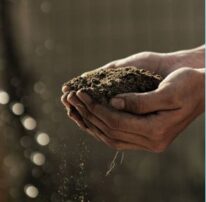Let’s face it: plastic pollution — in the form of litter on land and in the sea or other marine environments — is a serious problem. And while recycling has been part of the solution, it’s complex, time-consuming and, most importantly, costly. Recent estimates show that perhaps only about 10% of plastic is actually recycled. The remaining 90% is dumped in landfills, or, worse yet, incinerated, producing CO2 and other noxious gases, contributing to global climate change.
For decades, the industry has been searching for the “Holy Grail” of plastic pollution: bio-assimilation, the final stage of bio-degradation.
So exactly what is “bio-assimilation”? 
Simply put, “bio-assimilation” means that the plastic has bio-degraded to a molecular weight that can be eaten by microorganisms. At that point, the plastic literally ceases to exist. Micro-organisms, such as Ideonella sakaiensis (first identified in 2016) grow as a colony on polyolefin surfaces by adhering to it with thin appendages. These appendages secrete plastic-degrading enzymes which enables the micro-organisms to consume polyolefins such as PP and PE. This is the final stage of plastic biodegradation, leaving behind no microplastics, in either land or water environments. Voila! Problem solved!
So why haven’t plastics been bio-assimilated before? What’s the hold-up?
Because the additives which make bio-assimilation possible are just now coming onto the market. These additives, which comprise only 1% of the polyolefin resin in its raw state, act as a oxidative catalyst that initiates a free radical process that ultimately breaks down molecular chains. Once broken down, the polyolefin’s carbon structure is exposed to the hungry micro-organisms.
The plastics industry is keen to begin including these additives to their resins, before governments around the world begin gradually outlawing certain forms of plastic packaging and products. While an additional expense, these revolutionary new additives promise to make the world a cleaner place and potentially substantially increase the plastics production industry, including plastic injection molding.
And that’s the “Holy Grail” for the plastic injection molding industry and the entire planet!